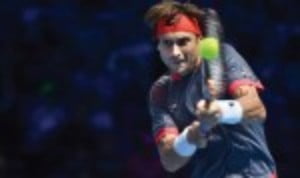
Brain Game: The Forced Error
Originally published on 05/01/16 00:00
The most important statistic in tennis is the one you never see. It’s what you try to do during every point, but you never really know just how effective you are at achieving it. It’s your primary goal, but it’s never recorded.
Look at any stat sheet from any match anywhere in the world – it’s invisible, but it’s the driving force behind every serve, every groundstroke and every volley. Tennis only records two ways a point ends – a winner, or an unforced error. The glaring omission is the third way a point ends – indeed more points end this way than either of the other two. The stat that absolutely, positively matters the most in tennis is the “forced error”.
Forcing errors means making your opponent uncomfortable, making them miss their shot because of something special you did to make them miss. In the men’s draw at the 2015 Australian Open, 70% (20,226) of points were errors (forced and unforced), and 30% (8,622) were winners. Forced errors were not recorded, but it’s easy to figure out by looking at total points, and subtracting winners and unforced errors. As it turns out, forced errors accounted for 42% (12,104) of all points, and unforced errors only accounted for 28% (8,122) of total points.
That means there were almost 50% more forced errors than unforced errors, and 40% more forced errors than winners. So if forcing an error is so important, how do you do it? There are eight ways to force an error, and they are found by looking at the court, the ball, the player, and a watch.
1 Consistency
Think of players like David Ferrer and Lleyton Hewitt. These guys are simply not going to miss. They were born with ridiculous shot tolerance. You know they are not going to miss, and they force you to go for something you shouldn’t – and you miss.
2 Direction
Let’s start cutting the court up, and begin with left and right. The ability to hit the ball where the opponent isn’t, or where they have just been, is a real strength. This takes into account targeting a weaker side, and also breaking down an opponent’s legs and lungs with side-to-side, lactic acid torture.
3 Depth
Imagine a line half-way between the service line and the baseline. Any ball that lands past that line is considered deep, jumping sharply at someone standing around the baseline, pushing them back to a part of
the court they can’t hurt you from. Depth also includes hitting short, such as drop shots.
4 Height
A great example here is Rafael Nadal working the ball up high to Roger Federer’s one-handed backhand, so he makes contact up around his shoulders. Height is really high, and it’s also really low. Very few players like a high ball, or a low ball.
This is an excerpt from "Forced Error" by Craig O'Shannessy in tennishead Volume 6 Issue 6. Subscribe to the magazine today or purchase a gift subscription – just £29 including UK delivery.


